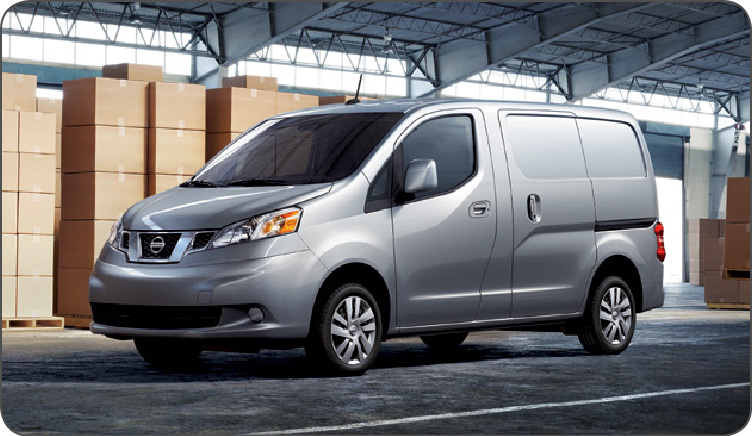
In recent years, battery shelf life and customer satisfaction have been greatly improved by incorporating a way to disable power hungry systems that are not necessary when shipping or storing Nissan vehicles. The ability to disable these systems is critical for extended storage to allow the battery to remain “factory fresh” for the customer when the vehicle is purchased. These systems are referred to as Extended Storage Mode and Body Control Module (BCM) Transit Mode. Extended Storage Mode can be simply turned on and off via a switch (Extended Storage Switch or ESS) in the interior fuse panel and can be either in Extended Storage Mode, when shipped or stored (inventory) on the dealership lot, or in a delivery mode when being test driven with a customer, or before delivery. BCM Transit Mode, on the other hand, can only be disengaged once to wake up the BCM and should not be disabled until just before delivery to the customer. While these systems are in the battery savings modes (Extended Storage/BCM Transit Modes “ON”), some systems will not work at all, and some will only work with the ignition on.
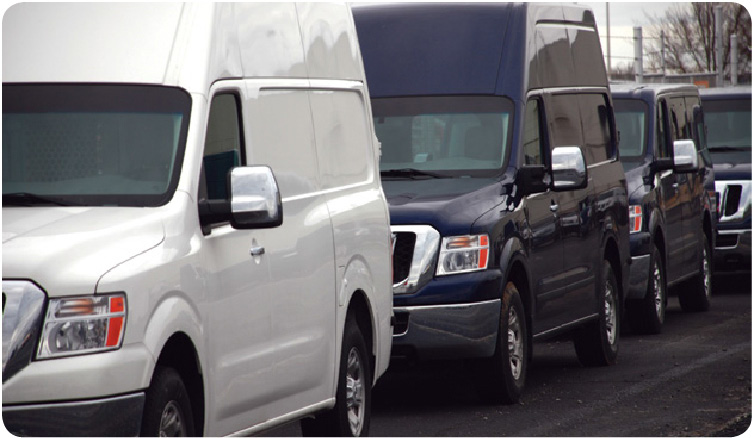
When the Extended Storage Switch (ESS) is ON (pulled out), some systems will not operate at all with the ignition ON or OFF! The HVAC will operate, but models with climate control (if equipped) will lose their memory from the prior key cycle and revert to 75° every time the ignition is turned off. They will also turn off every key cycle and then need to be manually turned back on. Another very obvious visual symptom can be seen for approximately 3 seconds after the Ignition is turned on. The tachometer and the speedometer’s needles will either vibrate against their hard stop or wander, and the tachometer may not return to zero when the ignition is turned off. This normal function is called “homing” and will occur any time a Combination Meter is disconnected from its power supply to establish where the hard stop is. Other systems that are affected by the Extended Storage Mode being ON are: Telematics (if equipped), interior Automatic Anti-glare Rear View Mirror (if equipped), Key Warning Chime and the CONSULT/DDL connector (not operating). Sometimes these systems can be overlooked when a new vehicle is being prepared for delivery, but these issues will most certainly cause the vehicle to return. This all can be avoided by retaining the Informational “Hang Tag” marked “IMPORTANT” that is attached to the Glove Box Door on the NV200 or either on the Column Shifter or Glove Box Door on the NV1500/2500/3500. The Hang Tag should be left in place until just before the vehicle is delivered to the customer as a reminder to turn the Extended Storage Mode as well as the BCM Transit Mode OFF.
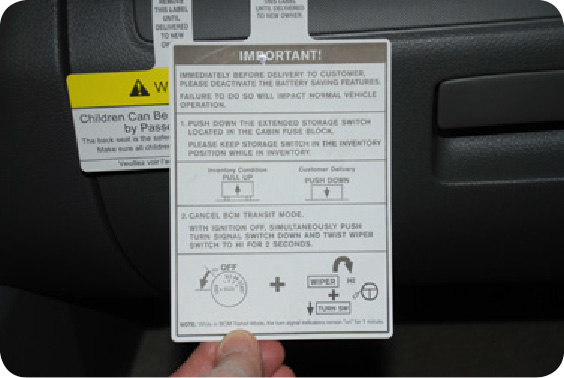
Below is an example of an Extended Storage Switch or ESS. The ESS switch in the NV can be found in the interior fuse panel to the left of the steering column.
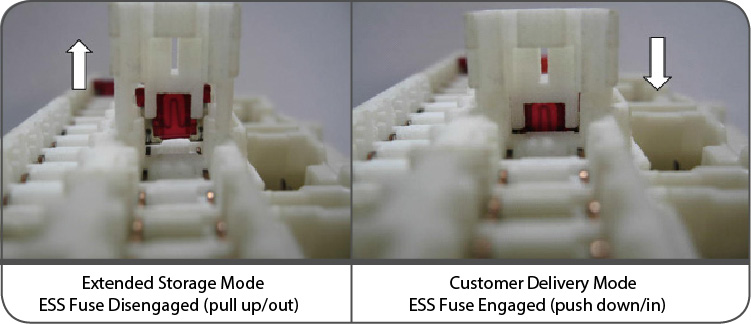
BCM Transit Mode has a different set of symptoms when still set in storage mode. If a technician was not aware that BCM Transit Mode was still active, it could result in hours of diagnostic time lost and possible unnecessary parts replacement. Knowing that the hazard lights in the Combination Meter will illuminate for 1 minute after the ignition is turned ON when the vehicle is still in BCM Transit Mode, could save a lot of grief!
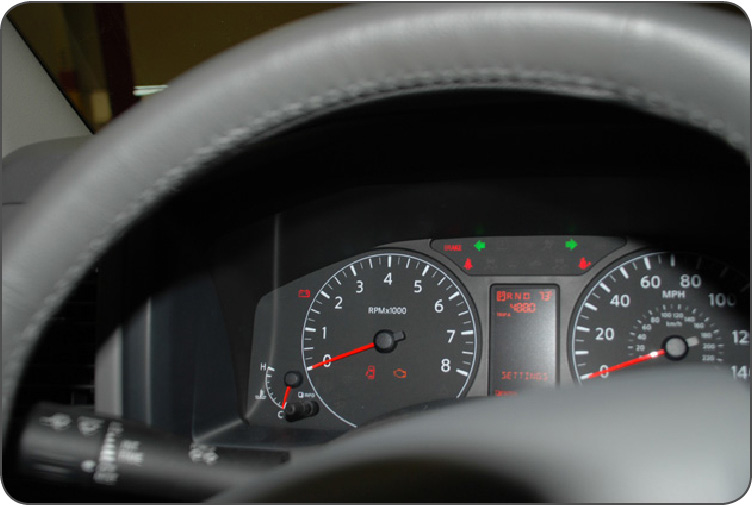
Systems that are affected by BCM Transit mode are the Lock/Unlock/Panic via Remote Keyless Entry (remote key fob, when applicable), the Interior Illumination and the Head Lights. These systems will not operate while the ignition is OFF, but will operate with it ON. Often, the first system thought to be inoperative is the Remote Keyless Entry system. That’s because the ignition would be OFF when a dealership staff would be attempting to use the remote to unlock the vehicle. Not understanding the root cause of this incident could possibly lead to the unnecessary replacement of the BCM. We recommend leaving the BCM Transit Mode Hang Tag on the Glove box Door or Column Shifter, to help in preventing this scenario.
Here is an example of how to cancel BCM Transit Mode for the NV just prior to customer delivery:
NV1500/2500/3500
1. Turn the ignition OFF.
2. Do the following at the same time for 2 seconds:
- Twist wiper switch to the high position (twist counterclockwise), and
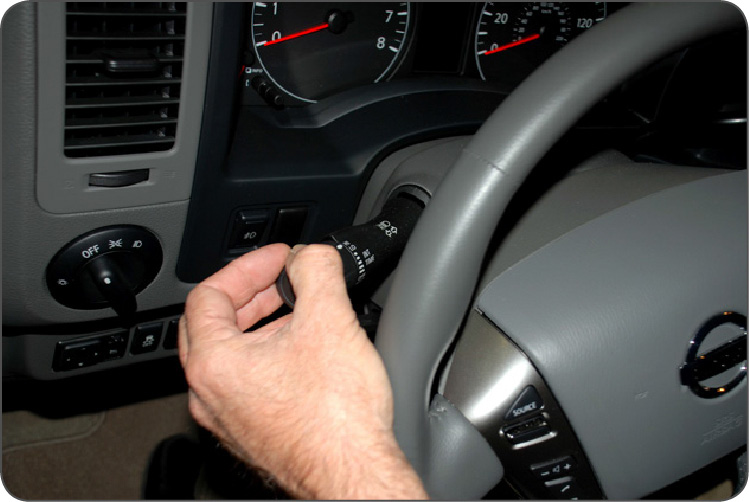
- Move turn signal switch to the left position (all the way down).

3. Confirm BCM Transit Mode is OFF:
a. Move the turn signal switch to the center (neutral) position.
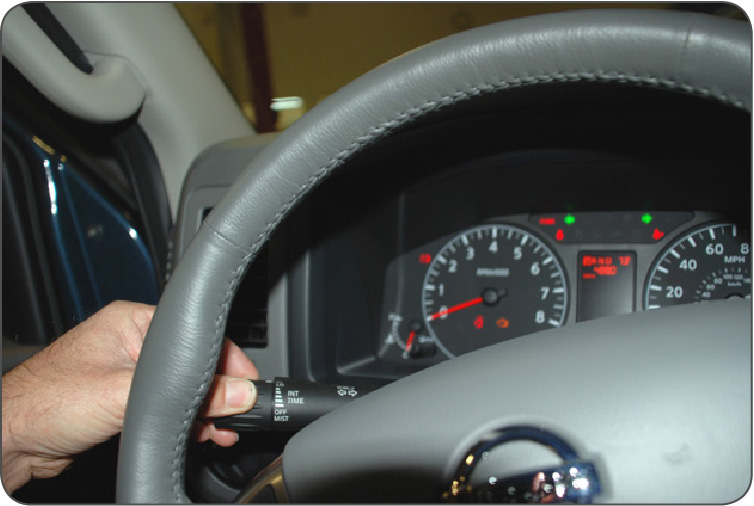
b. Turn the ignition ON – the turn signal indicators should stay OFF (not illuminate).
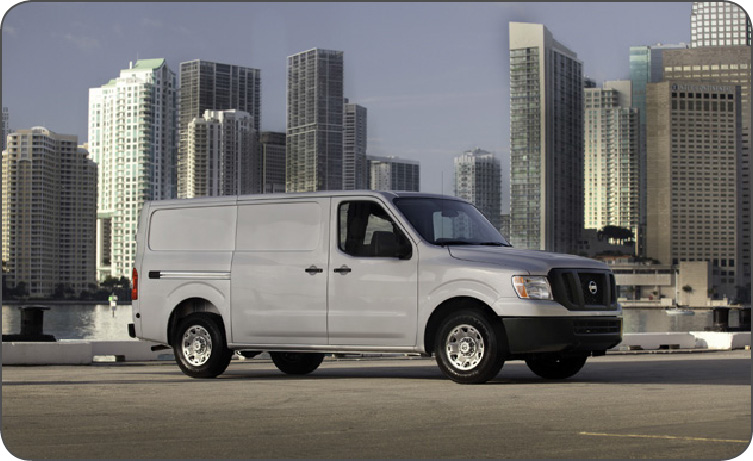
NV200
1. Turn the ignition OFF.
2. Do the following at the same time for 2 seconds:
- Move wiper switch to the high position (all the way down), and
- Move turn signal switch to the left position (all the way down).
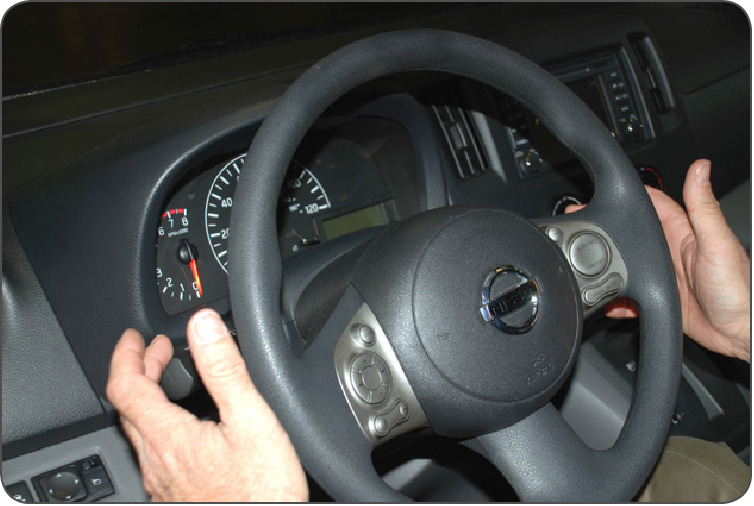
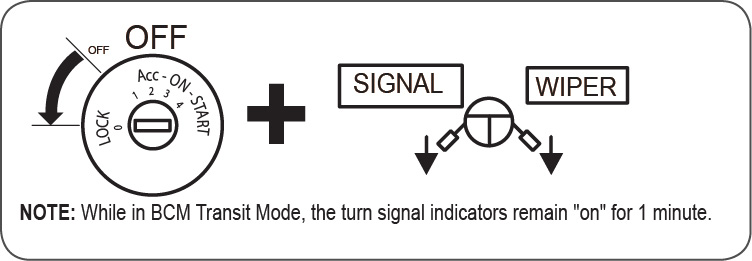
3. Confirm Transit Mode is OFF:
a. Move the turn signal switch to the center (neutral) position.
b. Turn the ignition ON – the turn signal indicators should stay OFF (not illuminate).
Some important facts to remember:
- BCM Transit Mode can only be canceled.
- You cannot switch back to BCM Transit Mode once it has been canceled.
- BCM Transit Mode should not be canceled until just prior to customer delivery.
Before the creation of Shipping Mode and Transit Mode, batteries discharged over a period of time sometimes were being replaced before the new vehicle was delivered to a customer. This was due to the impact on batteries sitting for long periods of down time, with a constant electrical load, shortened some of their usable service lives. Since the creation of the Shipping Mode and Transit Mode, overall battery replacement has been dramatically reduced and customer satisfaction has increased. A hint to helping increase your customer satisfaction is, when performing a dealer inspection, leave the hang tag on the Glove Box Door or Column Shifter until the vehicle is to be delivered to the customer. This will alert the sales staff that the ESS and BCM Mode are still active. They can then be turned off prior to being delivered to the customer so that a return trip is not necessary. This will lengthen the battery life, prevent any unnecessary repairs, and most importantly retain a satisfied customer.
